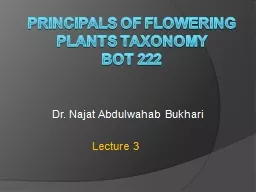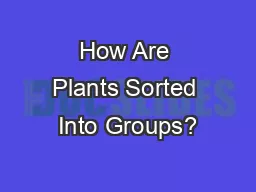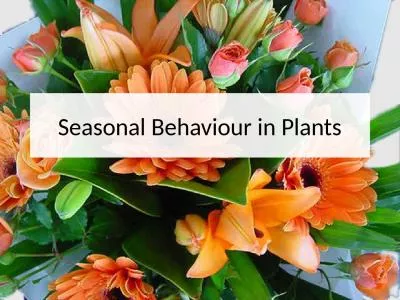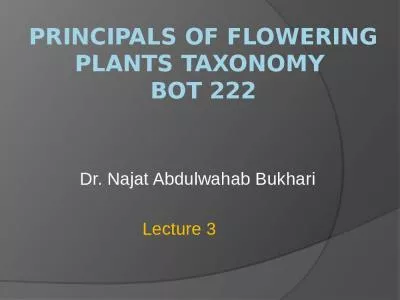PPT-Principals of Flowering Plants Taxonomy
Author : karlyn-bohler | Published Date : 2017-04-23
BOT 222 Dr Najat Abdulwahab Bukhari Lecture 3 University Vision and Mission Vision To be a worldclass university and a leader in developing Saudi Arabias knowledge
Presentation Embed Code
Download Presentation
Download Presentation The PPT/PDF document "Principals of Flowering Plants Taxonomy" is the property of its rightful owner. Permission is granted to download and print the materials on this website for personal, non-commercial use only, and to display it on your personal computer provided you do not modify the materials and that you retain all copyright notices contained in the materials. By downloading content from our website, you accept the terms of this agreement.
Principals of Flowering Plants Taxonomy: Transcript
Download Rules Of Document
"Principals of Flowering Plants Taxonomy"The content belongs to its owner. You may download and print it for personal use, without modification, and keep all copyright notices. By downloading, you agree to these terms.
Related Documents














